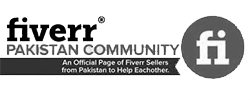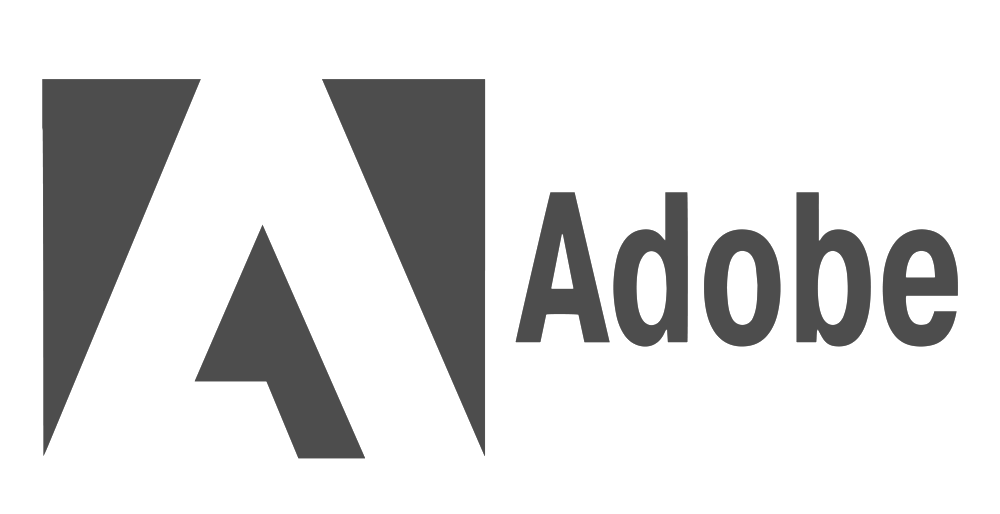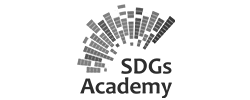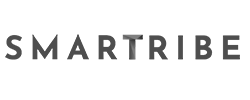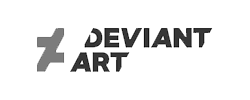I am trainer
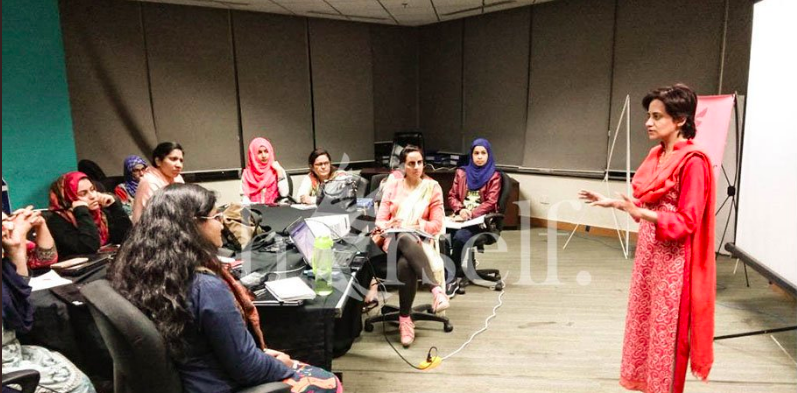
About me
"Unlocking creativity one session at a time: Join our dynamic trainer, Ayfar Khan, on a journey of imagination and innovation.
#CreativeSkills #TrainingWithAyfar 🎨✨"
Embark on a journey of innovation and imagination with Ayfar Khan, a seasoned trainer dedicated to unlocking the boundless potential within individuals through her transformative approach to creative skills development. With a passion for nurturing artistic flair and fostering inventive thinking, Ayfar stands as a beacon in the realm of training for creative excellence.
Ayfar Khan brings to the table a rich tapestry of experience, having honed her skills across diverse creative disciplines. Her extensive background spans the worlds of visual arts, design, writing, and beyond, providing her with a holistic understanding of the intricate nuances that contribute to a truly creative mind.
Ayfar Khan’s training programs offer a unique blend of expertise, inspiration, and practical guidance. Join Ayfar on a transformative voyage into the realm of creative skills, where imagination knows no bounds, and innovation becomes second nature.
Experience
Currently Doing
Ayfar.tech
Trainer (Part-time)
• Teaching Graphics Designing for print, social media, and web. • Mentor students for freelancing and graphic designing.
2021-2022
eRozgaar Punjab IT board)
Trainer (full-time)
• Teaching Graphics Designing for print, social media, and web. • Mentor students for freelancing and graphic designing.
2020-2020
Digi Pakistan
Master Trainer(Part-time)
• Teaching Graphics Designing and interior designing • Mentor students for their Career choices and selection. • Help them understand Graphic Design and interior designing.
2018-2020
Mass Communication Depat, NUML University
Teaching Faculty ( BS seems 4 and 8 - Advertising & PR) (Part-time)
• Teaching Graphics Designing for print and social media Campaign development. • Mentor students for their Career choices and selection. • Help students understand Graphic Design. • Advertising layout
2018-2019
ICS Department, University of the Punjab
Teaching Faculty ( MS Morning batch- Advertising & PR) -(Part time)
• Teaching Graphics Designing for print and social media Campaign development. • Video Production Project. • Teaching advertising and PR practices. • Mentor students for their Career choices and selection. • Help them understand Advertising business ideas.
2016-2017
Techhub Connects,Punjab IT Board
Independent Contractor (Creative and Art Expert) - (Full-time)
• Served as a fellowship instructor for entrepreneurs and freelancers, focusing on creative skills. • Conducted workshops on entrepreneurship. • Mentored upcoming freelancers and entrepreneurs to help them succeed. • Assisted freelancers in refining their idea pitches. • Provided training to over 500 freelancers in different creative skills.
Students Testimonials

Usama Khalid
Aliquip quae scipit eros. Anim commodi maiores pharetra, arcu incidunt, omnis iste. Elit tellus, luctus nec ullam corper mattis, pulvinar dapibus leo.
Elit tellus, luctus nec ullam corper mattis, pulvinar dapibus leo. Aliquip quae scipit eros. Anim commodi maiores pharetra, arcu incidunt, omnis iste.

Maleeha

Bisma
"Aliquip quae scipit eros. Anim commodi maiores pharetra, arcu incidunt, omnis iste. Elit tellus, luctus nec ullam corper mattis, pulvinar dapibus leo."
Trainings
I. Introduction to Graphic Design A. Definition and Evolution of Graphic Design B. Role and Importance in Various Industries C. Overview of Design Principles and Elements
II. Fundamentals of Design Software A. Introduction to Adobe Creative Suite (Photoshop, Illustrator, InDesign) B. Basic Tools and Functions C. File Management and Workflow
III. Design Principles and Elements A. Understanding Composition B. Color Theory and Application C. Typography and Font Design D. Imagery and Iconography
IV. Digital Illustration and Vector Graphics A. Techniques in Creating Vector Graphics B. Illustration Styles and Approaches C. Digital Drawing and Painting
V. Layout and Print Design A. Page Layout Principles B. Designing for Print Media C. Preparing Files for Print Production
VI. Web and Interactive Design A. Basics of Web Design B. User Interface (UI) and User Experience (UX) Design C. Introduction to Responsive Design
VII. Branding and Identity Design A. Creating Logos and Brand Marks B. Developing Brand Guidelines C. Corporate Identity Design
VIII. Motion Graphics and Animation A. Introduction to Motion Graphics B. Animation Techniques and Principles C. Integrating Animation into Designs
IX. Design Project Management A. Client Communication and Collaboration B. Project Planning and Execution C. Presenting and Receiving Feedback
X. Portfolio Development A. Compiling and Showcasing Design Work B. Resume and Cover Letter Writing C. Online Portfolio Platforms
XI. Emerging Trends in Graphic Design A. Current Industry Trends B. Technological Advances in Design C. Sustainable Design Practices
XII. Professional Ethics in Graphic Design A. Copyright and Intellectual Property B. Ethical Considerations in Design C. Industry Standards and Best Practices
XIII. Final Project and Presentation A. Independent Design Project B. Portfolio Review and Critique C. Graduation Exhibition
XIV. Industry Internship (Optional) A. Practical Application of Design Skills B. Networking and Building Professional Relationships C. Industry Exposure and Experience
XV. Final Examination and Certification A. Comprehensive Exam B. Evaluation of Design Portfolio C. Awarding of Diploma in Graphic Design
This outline provides a comprehensive overview of the essential topics and skills covered in a Graphic Design diploma course. The course structure includes a balance of theory, practical application, and professional development components to ensure a well-rounded education in graphic design.
I. Introduction to Freelancing
- A. Definition and Evolution of Freelancing
- B. Understanding the Gig Economy
- C. Importance of Freelancing in the Modern Workforce
- D. Opportunities and Challenges in Freelancing
II. Building a Freelancer Mindset
- A. Self-Assessment and Skills Inventory
- B. Goal Setting and Time Management
- C. Developing a Growth Mindset
- D. Overcoming Challenges and Rejections
III. Navigating Freelance Platforms
- A. Introduction to Popular Freelance Platforms
- B. Creating an Effective Profile
- C. Bidding Strategies and Proposal Writing
- D. Managing Client Communication and Expectations
IV. Establishing Your Freelance Brand
- A. Defining Your Niche and Expertise
- B. Building a Professional Portfolio
- C. Crafting a Personal Brand Story
- D. Utilizing Social Media for Self-Promotion
V. Legal and Financial Aspects of Freelancing
- A. Understanding Freelance Contracts
- B. Setting Freelance Rates and Pricing Strategies
- C. Invoicing and Payment Collection
- D. Taxation and Financial Planning for Freelancers
VI. Effective Project Management
- A. Project Planning and Scope Definition
- B. Time Management and Deadline Adherence
- C. Client Feedback and Revision Processes
- D. Quality Assurance and Client Satisfaction
VII. Marketing and Networking for Freelancers
- A. Building an Online Presence
- B. Networking Strategies for Freelancers
- C. Using Content Marketing to Attract Clients
- D. Leveraging Testimonials and Referrals
VIII. Continuous Learning and Skill Development
- A. Identifying Industry Trends and Technologies
- B. Participating in Online Courses and Workshops
- C. Staying Updated on Market Demands
- D. Adapting to Changes in the Freelance Landscape
IX. Freelancer Well-being and Work-Life Balance
- A. Managing Stress and Burnout
- B. Establishing Healthy Work Habits
- C. Setting Boundaries with Clients
- D. Balancing Personal and Professional Life
X. Final Project and Portfolio Showcase
- A. Culminating Freelance Project
- B. Presentation of Achievements and Challenges
- C. Peer Feedback and Reflection
- D. Graduation and Certification Ceremony
Note: This diploma outline is a guide and can be customized based on the specific needs and goals of the freelancing course. Additionally, each module can include practical exercises, case studies, and guest lectures from experienced freelancers in relevant topics.
I. Introduction to Video Production A. Overview of Video Production 1. Definition and importance 2. Evolution of video production
B. Key Concepts 1. Pre-production, production, and post-production phases 2. Storytelling through visuals 3. Understanding the target audience
C. Industry Overview 1. Job roles and responsibilities 2. Emerging trends in video production
II. Pre-Production Phase A. Scriptwriting 1. Basics of scriptwriting 2. Storyboarding techniques
B. Planning and Organization 1. Project planning 2. Budgeting and scheduling 3. Location scouting
C. Crew Roles and Responsibilities 1. Director, producer, cinematographer, and other key roles 2. Collaboration and communication skills
III. Production Phase A. Camera Operation 1. Understanding camera types and functions 2. Shot composition and framing techniques
B. Lighting Techniques 1. Natural vs. artificial lighting 2. Lighting setups for different scenes
C. Sound Recording 1. Importance of good audio 2. Equipment and techniques for sound recording
D. Directing and Working with Talent 1. Communication and leadership skills 2. Directing actors and interview subjects
IV. Post-Production Phase A. Video Editing 1. Introduction to editing software 2. Cutting, transitions, and effects
B. Color Grading and Correction 1. Enhancing visual appeal 2. Correcting color issues
C. Sound Editing and Mixing 1. Cleaning and enhancing audio 2. Adding music and sound effects
D. Exporting and Distribution 1. Export formats and settings 2. Platforms for distribution
V. Specialized Topics in Video Production A. Virtual Reality (VR) and Augmented Reality (AR) 1. Introduction to immersive storytelling 2. Technical aspects of VR and AR production
B. Documentary Filmmaking 1. Research and storytelling for documentaries 2. Capturing real-life narratives
C. Corporate Video Production 1. Meeting client expectations 2. Effective communication through corporate videos
VI. Final Project A. Capstone Video Project 1. Planning, production, and post-production 2. Presentation and critique
VII. Professional Development A. Building a Portfolio 1. Showcasing diverse skills 2. Tailoring the portfolio to target audiences
B. Networking in the Industry 1. Industry events and associations 2. Online platforms and social media
VIII. Ethics and Legal Considerations A. Copyright and intellectual property B. Privacy issues in video production C. Professional and ethical behavior in the industry
IX. Industry Internship (Optional) A. Practical experience in a professional video production setting B. Application of skills learned in the course C. Networking opportunities
X. Course Review and Future Trends A. Reflection on the learning journey B. Emerging technologies and trends in video production C. Continued learning and professional development opportunities
I. Course Introduction A. Welcome and Course Overview 1. Introduction to Social Media Campaign Design 2. Importance of Social Media in Marketing
II. Module 1: Understanding Social Media Platforms A. Overview of Major Social Media Platforms 1. Facebook 2. Instagram 3. Twitter 4. LinkedIn 5. TikTok B. Audience Demographics and Behavior C. Platform-specific Features and Tools
III. Module 2: Developing a Social Media Strategy A. Setting Campaign Objectives B. Target Audience Identification C. Competitor Analysis D. Content Planning and Calendar E. Budgeting and Resource Allocation
IV. Module 3: Content Creation and Curation A. Visual Content Design Principles B. Copywriting for Social Media C. Multimedia Content (Images, Videos, Infographics) D. User-Generated Content Strategies
V. Module 4: Engagement and Community Building A. Building an Online Community B. Effective Communication on Social Media C. Responding to Feedback and Comments D. Running Contests and Giveaways
VI. Module 5: Advertising on Social Media A. Introduction to Social Media Advertising B. Ad Formats and Specifications C. Targeting and Retargeting Strategies D. Budgeting and ROI Measurement
VII. Module 6: Analytics and Reporting A. Introduction to Social Media Analytics Tools B. Key Performance Indicators (KPIs) C. Tracking and Measuring Campaign Success D. Adjusting Strategies Based on Analytics
VIII. Module 7: Case Studies and Best Practices A. Analyzing Successful Social Media Campaigns B. Learning from Failures C. Ethical Considerations in Social Media Campaigns D. Industry-Specific Case Studies
IX. Module 8: Emerging Trends in Social Media A. Augmented Reality (AR) and Virtual Reality (VR) B. Influencer Marketing C. Social Commerce D. The Impact of New Features and Algorithms
X. Final Project: Social Media Campaign Design A. Developing a Comprehensive Campaign B. Presentation of Campaign Strategies C. Peer Review and Feedback
XI. Certification and Beyond A. Evaluation and Grading Criteria B. Certification Criteria C. Continuing Education Opportunities in Social Media Marketing
This diploma outline provides a structured overview of the key components and topics covered in the Social Media Campaign Design course. Each module is designed to build a strong foundation and practical skills in planning, executing, and analyzing effective social media campaigns. Students will have the opportunity to apply their knowledge through a final project, ensuring they are well-prepared to enter the dynamic field of social media marketing.
I. Introduction to Digital Marketing A. Overview of Digital Marketing 1. Evolution and Importance 2. Key Concepts and Definitions B. Digital Marketing vs Traditional Marketing C. Digital Marketing Channels 1. Search Engine Optimization (SEO) 2. Social Media Marketing (SMM) 3. Email Marketing 4. Content Marketing 5. Pay-Per-Click (PPC) Advertising 6. Affiliate Marketing 7. Analytics and Data-driven Marketing
II. Developing a Digital Marketing Strategy A. Setting Marketing Objectives B. Target Audience Identification C. Competitor Analysis D. SWOT Analysis E. Selecting Digital Marketing Channels F. Budgeting and Resource Allocation G. Creating a Content Calendar H. Campaign Measurement and Analytics
III. Search Engine Optimization (SEO) A. Understanding Search Engines B. On-page Optimization 1. Keyword Research 2. Title Tags, Meta Descriptions, and Headings 3. URL Structure 4. Image Optimization C. Off-page Optimization 1. Link Building Strategies 2. Social Media Signals 3. Online Reputation Management D. SEO Analytics and Reporting
IV. Social Media Marketing (SMM) A. Introduction to Social Media Platforms 1. Facebook 2. Twitter 3. LinkedIn 4. Instagram 5. Pinterest 6. Snapchat B. Creating Engaging Content C. Social Media Advertising D. Social Media Analytics and Measurement
V. Email Marketing A. Building and Segmenting Email Lists B. Crafting Effective Email Copy C. Email Design and Layout D. A/B Testing and Optimization E. Email Automation F. Analytics and Reporting in Email Marketing
VI. Content Marketing A. Content Creation Strategies B. Blogging and Article Writing C. Video Marketing D. Infographics and Visual Content E. Guest Blogging and Influencer Outreach F. Content Distribution and Promotion G. Measuring Content Marketing Success
VII. Pay-Per-Click (PPC) Advertising A. Introduction to PPC B. Google Ads and Bing Ads C. Creating Effective Ad Copy D. Keyword Research for PPC E. Bid Management and Budgeting F. Ad Performance Tracking and Optimization
VIII. Affiliate Marketing A. Understanding Affiliate Marketing B. Setting up an Affiliate Program C. Affiliate Recruitment and Management D. Tracking and Analytics in Affiliate Marketing
IX. Analytics and Data-driven Marketing A. Introduction to Marketing Analytics B. Setting up Google Analytics C. Key Performance Indicators (KPIs) D. Data Analysis and Interpretation E. Reporting and Dashboard Creation
X. Capstone Project A. Applying Digital Marketing Strategies B. Developing and Implementing a Campaign C. Measurement and Analysis of Campaign Performance
XI. Emerging Trends in Digital Marketing A. Artificial Intelligence in Marketing B. Voice Search Optimization C. Augmented Reality (AR) and Virtual Reality (VR) in Marketing D. Blockchain and its Impact on Digital Marketing
XII. Final Examination and Certification A. Comprehensive Exam Covering All Modules B. Certification of Completion in Digital Marketing
I. Introduction to Printing Technologies A. Overview of Printing History B. Evolution of Printing Technologies C. Importance of Digital and Offset Printing
II. Fundamentals of Offset Printing A. Understanding the Offset Printing Process 1. Plate Preparation 2. Ink Application 3. Image Transfer 4. Printing Substrates B. Offset Printing Equipment 1. Offset Press Components 2. Types of Offset Presses 3. Maintenance and Troubleshooting
III. Introduction to Digital Printing A. Basics of Digital Printing 1. Digital Printing vs. Offset Printing 2. Digital Printing Technologies B. Digital Printing Equipment 1. Printers and Plotters 2. Digital Presses C. Color Management in Digital Printing 1. Color Spaces 2. Calibration and Profiling
IV. Prepress Processes A. Preparing Artwork for Printing 1. Image Resolution and File Formats 2. Color Separation B. Computer-to-Plate (CTP) Technology 1. Plate Imaging 2. CTP Systems and Workflow
V. Print Finishing Techniques A. Binding and Finishing Processes 1. Cutting and Trimming 2. Folding and Collating 3. Binding Methods (saddle stitching, perfect binding, etc.) B. Coating and Lamination 1. Types of Coatings 2. Lamination Processes
VI. Quality Control and Assurance A. Inspecting Printed Materials 1. Color Accuracy 2. Registration 3. Print Quality Standards B. Troubleshooting Print Defects 1. Common Printing Issues 2. Problem-solving Techniques
VII. Industry Trends and Innovations A. Emerging Technologies in Printing B. Sustainable Printing Practices C. Future of Digital and Offset Printing
VIII. Business and Marketing in Printing A. Basics of Print Estimation B. Customer Service in Printing C. Marketing Strategies for Print Shops
IX. Internship/Practical Training A. Hands-on Experience in a Printing Environment B. Applying Classroom Knowledge in a Real-world Setting C. Building Skills in Printing Operations
X. Final Project A. Comprehensive Printing Project B. Integration of Digital and Offset Printing Techniques C. Presentation of the Final Project to Peers and Instructors
XI. Certification and Graduation A. Evaluation of Coursework and Performance B. Awarding of Diplomas C. Graduation Ceremony
Note: The diploma outline is a suggested framework and may be customized based on the specific curriculum and learning objectives of the educational institution offering the course. Adjustments can be made to cater to the level of expertise, duration of the program, and available resources.
I. Introduction to WordPress A. Overview of Content Management Systems (CMS) B. History and Evolution of WordPress C. Installing and Setting Up WordPress D. Understanding the WordPress Dashboard
II. Basic Website Setup A. Choosing a Domain Name and Hosting B. Installing Themes and Plugins C. Configuring Basic Settings D. Creating Pages and Posts
III. Theme Development A. Introduction to WordPress Themes B. Anatomy of a WordPress Theme C. Building Custom Themes from Scratch D. Customizing Existing Themes
IV. Responsive Design and Mobile Optimization A. Importance of Responsive Design B. Implementing Responsive Layouts C. Mobile Optimization Best Practices D. Testing and Debugging for Mobile Devices
V. Plugin Development A. Overview of WordPress Plugins B. Building Custom Plugins C. Integrating Third-Party Plugins D. Best Practices in Plugin Development
VI. Advanced Theme Features A. Custom Post Types and Taxonomies B. Advanced Theme Options and Settings C. Theme Customizer Integration D. Multi-language and Internationalization
VII. Security and Performance Optimization A. WordPress Security Best Practices B. Performance Optimization Techniques C. Caching and Content Delivery Networks (CDN) D. Regular Backups and Disaster Recovery
VIII. E-commerce with WooCommerce A. Introduction to E-commerce in WordPress B. Setting Up and Configuring WooCommerce C. Customizing WooCommerce for Specific Needs D. Managing Products, Orders, and Payments
IX. Search Engine Optimization (SEO) A. Basics of SEO for WordPress B. SEO-friendly URL Structure C. Optimizing Content for Search Engines D. Using SEO Plugins Effectively
X. Troubleshooting and Debugging A. Identifying and Fixing Common WordPress Issues B. Debugging Techniques and Tools C. Handling Theme and Plugin Conflicts D. Understanding WordPress Error Messages
XI. Project Development and Portfolio Building A. Undertaking a Real-world WordPress Project B. Showcasing Work in a Professional Portfolio C. Client Communication and Project Management D. Ethical Considerations in Web Development
XII. Final Project and Certification A. Designing and Developing a Comprehensive WordPress Website B. Peer Review and Feedback C. Presentation of Final Projects D. Awarding of the Diploma in WordPress Design and Development
I. Introduction to Photography (Weeks 1-2)
A. Overview of Photography
B. Evolution of Photography
C. Importance of Photography in Various Fields
II. Understanding Camera Equipment (Weeks 3-5)
A. Types of Cameras
B. Camera Components and Functions
C. Lenses and Their Uses
D. Tripods, Filters, and Other Accessories
III. Fundamentals of Exposure (Weeks 6-8)
A. Aperture, Shutter Speed, and ISO
B. Exposure Triangle and Balancing Settings
C. Metering Techniques
D. Depth of Field and Motion Blur
IV. Composition and Framing (Weeks 9-12)
A. Rule of Thirds
B. Leading Lines and Symmetry
C. Framing and Perspective
D. Lighting and its Impact on Composition
V. Lighting Techniques (Weeks 13-16)
A. Natural Light vs. Artificial Light
B. Portrait Lighting
C. Studio Lighting
D. Outdoor Lighting and Golden Hour
VI. Post-Processing and Editing (Weeks 17-20)
A. Introduction to Editing Software (e.g., Adobe Lightroom, Photoshop)
B. Basic Editing Techniques
C. Retouching and Enhancement
D. Workflow and Organization
VII. Genres of Photography (Weeks 21-24)
A. Portrait Photography
B. Landscape Photography
C. Macro Photography
D. Street Photography
E. Wildlife and Nature Photography
VIII. Specialized Techniques (Weeks 25-28)
A. HDR Photography
B. Long Exposure Photography
C. Panoramic Photography
D. Time-Lapse Photography
IX. Business and Marketing for Photographers (Weeks 29-32)
A. Building a Photography Business
B. Marketing and Branding
C. Client Management and Communication
D. Legal and Ethical Considerations
X. Final Project and Portfolio Development (Weeks 33-36)
A. Project Assignment
B. Shooting and Editing
C. Portfolio Presentation
D. Critique and Feedback
XI. Industry Trends and Emerging Technologies (Weeks 37-40)
A. Contemporary Trends in Photography
B. Incorporating New Technologies
C. Social Media and Online Presence
XII. Professional Development and Career Paths (Weeks 41-44)
A. Networking and Building Industry Connections
B. Internships and Work Experience
C. Career Opportunities in Photography
XIII. Final Assessment and Certification (Weeks 45-48)
A. Practical Examination
B. Portfolio Review
C. Written Assessment
D. Certification Ceremony
Note: This outline is a suggested framework and can be adjusted based on the specific requirements and duration of the photography course.
Note: This is a general outline and can be customized based on the specific requirements and focus areas of the animation course.
I. Introduction to Animation
- Overview of Animation
- History and Evolution of Animation
- Types of Animation (2D, 3D, Stop-motion, etc.)
- Importance of Animation in various industries
II. Fundamentals of Drawing and Design
- Basic Drawing Techniques
- Principles of Design
- Storyboarding and Concept Art
- Character Design and Development
III. 2D Animation
- Traditional Animation Techniques
- Digital 2D Animation Tools and Software
- Frame-by-Frame Animation
- Lip Sync and Character Animation
IV. 3D Animation
- Introduction to 3D Animation
- 3D Modeling Techniques
- Rigging and Character Setup
- Animation in 3D Space
- Lighting and Rendering in 3D Animation
V. Stop-motion Animation
- Stop-motion Basics
- Frame Capture and Editing
- Set Design and Construction
- Puppet Creation and Animation
VI. Digital Animation Tools and Software
- Overview of Animation Software
- Hands-on Training with Industry-standard Software
- Workflow in Animation Production
- Integration of Animation Software with Other Tools
VII. Special Effects and Post-Production
- Introduction to Special Effects in Animation
- Compositing and Editing
- Sound Design and Music in Animation
- Finalizing the Animation Project
VIII. Portfolio Development
- Creating a Professional Animation Portfolio
- Showcasing Projects and Artwork
- Presentation and Self-Promotion
IX. Industry Insights and Guest Lectures
- Guest Lectures from Industry Professionals
- Insights into the Animation Industry
- Networking and Career Opportunities
X. Internship and Practical Experience
- Hands-on Experience through Internship Programs
- Real-world Animation Projects
- Industry Exposure and Networking
XI. Final Project
- Capstone Animation Project
- Independent or Group-based Project
- Presentation and Evaluation
XII. Career Development and Job Placement
- Resume Building and Job Application Skills
- Job Placement Assistance
- Career Paths in Animation
XIII. Ethical and Legal Considerations in Animation
- Copyright and Intellectual Property
- Professional Ethics in Animation
- Legal Aspects of Animation Production
XIV. Emerging Trends in Animation
- Virtual Reality (VR) and Augmented Reality (AR) in Animation
- Artificial Intelligence in Animation
- Interactive and Immersive Animation Experiences
XV. Continuous Learning and Professional Development
- Resources for Ongoing Learning
- Industry Conferences and Events
- Staying Updated with Technology and Trends
This comprehensive diploma program is designed to equip students with the necessary skills and knowledge to pursue a successful career in the dynamic field of animation.
Program Overview:
The Diploma in Event Graphic Designing and Planning is a comprehensive program designed to equip students with the skills and knowledge necessary to excel in the dynamic field of event design and planning. This program integrates both the creative aspects of graphic design with the strategic elements of event planning, providing students with a well-rounded education that prepares them for success in the industry.
Program Duration:
- Total Duration: 12 months
- Semester 1: Fundamentals of Graphic Design (3 months)
- Semester 2: Event Planning Essentials (3 months)
- Semester 3: Advanced Graphic Design for Events (3 months)
- Semester 4: Event Design and Coordination (3 months)
Program Structure:
Semester 1: Fundamentals of Graphic Design (3 months)
Module 1: Introduction to Graphic Design Principles
- Understanding design elements and principles
- Color theory and application
- Typography basics
Module 2: Adobe Creative Suite Essentials
- In-depth training on Adobe Photoshop, Illustrator, and InDesign
- Hands-on projects to apply software skills
Module 3: Visual Communication
- Developing a design brief
- Creating effective visual communication materials
- Logo design and branding concepts
Semester 2: Event Planning Essentials (3 months)
Module 1: Introduction to Event Planning
- Understanding the event planning industry
- Event types and their unique requirements
- Budgeting and timeline management
Module 2: Event Logistics and Coordination
- Venue selection and setup
- Vendor management
- Risk management and contingency planning
Module 3: Event Marketing and Promotion
- Developing marketing materials for events
- Social media promotion strategies
- Public relations and media outreach
Semester 3: Advanced Graphic Design for Events (3 months)
Module 1: Advanced Adobe Creative Suite Techniques
- Mastering advanced features of Photoshop, Illustrator, and InDesign
- 3D modeling and animation basics
Module 2: Event-specific Graphic Design
- Designing event invitations and promotional materials
- Creating multimedia presentations
- Augmented reality and virtual reality applications in event design
Module 3: Portfolio Development
- Compiling a professional portfolio showcasing design work
- Presenting and defending design choices
Semester 4: Event Design and Coordination (3 months)
Module 1: Conceptualizing Event Designs
- Translating event concepts into visual designs
- Mood boards and design presentations
Module 2: Technology in Event Design
- Implementing technology in event visuals
- Projection mapping and interactive installations
Module 3: Final Project and Internship
- Collaborative event design project
- Internship placement for hands-on experience in the field
Assessment and Certification:
- Continuous assessment through assignments, projects, and examinations
- Final project and internship evaluation
- Successful completion leads to the award of a Diploma in Event Graphic Designing and Planning
Career Opportunities:
- Event Graphic Designer
- Event Planner
- Marketing Coordinator for Events
- Freelance Event Design Consultant
- Exhibition Designer
Note: The course outline is subject to periodic updates to align with industry trends and advancements.
I. Introduction to Apparel Design
- A. Overview of the Fashion Industry
- B. Historical Perspectives on Fashion
- C. Importance of Apparel Design in the Fashion Landscape
- D. Current Trends and Innovations in Apparel Design
II. Fundamental Design Principles
- A. Elements of Design
- Color Theory
- Texture and Pattern
- Shape and Form
- B. Principles of Design
- Balance
- Proportion
- Emphasis
- Unity
III. Drawing and Illustration Techniques
- A. Basic Sketching Skills
- B. Figure Drawing and Proportions
- C. Rendering Techniques
- D. Digital Illustration Tools in Apparel Design
IV. Fabric Knowledge and Textile Science
- A. Understanding Different Fabrics and Textiles
- B. Fabric Properties and Characteristics
- C. Sustainable and Eco-Friendly Fabrics
- D. Fabric Sourcing and Selection for Apparel Design
V. Pattern Making and Garment Construction
- A. Introduction to Pattern Making
- B. Pattern Drafting Techniques
- C. Garment Construction Basics
- D. Fit and Alterations
VI. Fashion Trend Analysis and Forecasting
- A. Researching Fashion Trends
- B. Analyzing Cultural and Societal Influences
- C. Forecasting Fashion Trends
- D. Implementing Trends in Apparel Design
VII. Fashion Portfolio Development
- A. Creating a Professional Design Portfolio
- B. Presentation Skills for Apparel Designers
- C. Photography and Styling for Portfolio
- D. Digital Portfolio Development
VIII. Apparel Design Project
- A. Conceptualizing and Planning a Design Project
- B. Project Execution and Management
- C. Final Presentation and Critique
- D. Portfolio Integration of Design Project
IX. Business and Marketing in Fashion
- A. Basics of Fashion Business
- B. Branding and Marketing for Apparel Designers
- C. Retail and Merchandising Concepts
- D. Entrepreneurship in Apparel Design
X. Professional Development and Industry Exposure
- A. Networking in the Fashion Industry
- B. Internship Opportunities
- C. Attending Fashion Shows and Events
- D. Building a Career in Apparel Design
XI. Ethics and Sustainability in Apparel Design
- A. Ethical Practices in Fashion
- B. Sustainable and Responsible Design Practices
- C. Environmental Impact of Fashion Industry
- D. Implementing Sustainable Design in Apparel
XII. Final Assessment and Certification
- A. Evaluation of Design Projects and Portfolios
- B. Written Examinations on Apparel Design Principles
- C. Practical Skills Assessment
- D. Awarding of Diploma in Apparel Design
Note: This diploma outline is a general guide and may be adapted to suit the specific requirements and focus areas of the Apparel Design course.
I. Introduction to Interior Design A. Overview of Interior Design as a Profession B. Historical Perspectives in Interior Design C. Current Trends and Influences in Interior Design
II. Design Principles and Elements A. Understanding Design Principles (Balance, Proportion, Harmony, Rhythm, Emphasis) B. Exploring Design Elements (Color, Texture, Pattern, Shape, Space)
III. Space Planning and Layout A. Residential Interior Design 1. Living Spaces 2. Bedrooms 3. Kitchens and Dining Areas 4. Bathrooms B. Commercial Interior Design 1. Retail Spaces 2. Office Spaces 3. Hospitality Design
IV. Architectural Drafting and Drawing A. Introduction to Drafting Tools and Software B. Floor Plans, Elevations, and Sections C. 3D Modeling for Interior Design
V. Furniture Design and Selection A. Furniture Styles and Periods B. Ergonomics in Furniture Design C. Sustainable and Eco-Friendly Furniture Choices
VI. Materials and Finishes A. Understanding Different Materials (Wood, Metal, Glass, Fabrics) B. Finishes and Surface Treatments C. Sustainability in Material Selection
VII. Lighting Design A. Principles of Lighting Design B. Natural and Artificial Lighting C. Lighting Fixtures and Systems
VIII. Color Theory and Application A. Basics of Color Theory B. Psychology of Color C. Color Schemes and Combinations
IX. Professional Practices in Interior Design A. Client Communication and Project Management B. Budgeting and Cost Estimation C. Codes and Regulations in Interior Design
X. Portfolio Development A. Creating a Professional Portfolio B. Presenting and Marketing Design Projects C. Industry Networking and Internship Opportunities
XI. Final Project and Graduation A. Capstone Project: Designing a Real-World Interior Space B. Presentation and Evaluation C. Graduation Ceremony and Recognition
Note: The duration of each module and specific topics covered may vary based on the program’s structure and requirements. This outline serves as a general framework for an interior design diploma course.
I. Introduction to Festival Design (Weeks 1-2)
- Overview of Festival Design
- Historical evolution of festivals
- Importance of design in creating memorable festival experiences
- Exploration of different types of festivals
II. Elements of Festival Design (Weeks 3-6)
Spatial Design
- Venue selection and layout
- Signage and wayfinding
- Stage and booth design
Visual Identity
- Logo and branding
- Color schemes and themes
- Merchandise design
Interactive Installations
- Incorporating technology and multimedia
- Engaging the audience through immersive experiences
- Designing interactive spaces
III. Planning and Organization (Weeks 7-10)
Project Management
- Budgeting and resource allocation
- Timeline development
- Vendor and sponsor management
Permitting and Compliance
- Understanding legal and safety considerations
- Obtaining necessary permits
- Compliance with local regulations
Event Marketing and Promotion
- Creating promotional materials
- Social media strategies
- Public relations and media partnerships
IV. Case Studies and Practical Applications (Weeks 11-14)
- Analyzing successful festival designs
- Guest lectures from experienced festival designers
- Group projects simulating real-world scenarios
- Site visits to existing festivals or event spaces
V. Emerging Trends and Innovations (Weeks 15-17)
- Exploring current trends in festival design
- Sustainability in festival design
- Integration of technology and innovation
VI. Final Project: Festival Design Proposal (Weeks 18-20)
- Students develop a comprehensive festival design proposal
- Presentation of proposals to the class
- Feedback and revisions
VII. Portfolio Development and Career Guidance (Weeks 21-22)
- Building a portfolio showcasing festival design projects
- Resume building and job search strategies
- Guest speakers from the industry
VIII. Final Assessment and Graduation (Week 23)
- Evaluation of the festival design proposal
- Final examination
- Graduation ceremony and distribution of diplomas
This festival design course is designed to provide students with a holistic understanding of the various components involved in creating successful and memorable festivals. Through a combination of theoretical knowledge, practical applications, and real-world case studies, students will develop the skills and expertise necessary to excel in the field of festival design.
Diploma in Art and Craft Course Outline
I. Introduction to Art and Craft A. Definition and Importance 1. Historical perspective 2. Contemporary relevance B. Overview of Artistic Movements 1. Renaissance to Modern Art 2. Influential art movements
II. Drawing and Sketching Techniques A. Basic Drawing Skills 1. Line, shape, and form 2. Perspective drawing B. Advanced Sketching Techniques 1. Still life and composition 2. Figure drawing
III. Painting Techniques A. Introduction to Different Painting Mediums 1. Watercolor 2. Acrylic 3. Oil B. Color Theory 1. Understanding the color wheel 2. Mixing and blending colors
IV. Sculpture and 3D Art A. Introduction to Sculpture 1. Materials and tools 2. Sculpture techniques B. Three-Dimensional Art Forms 1. Clay modeling 2. Mixed media sculptures
V. Craftsmanship and Handmade Crafts A. Traditional Handicrafts 1. Paper crafting 2. Origami B. Contemporary Craft Forms 1. DIY crafts 2. Crafting with recycled materials
VI. Art History and Appreciation A. Survey of Art History 1. Prehistoric art to contemporary art 2. Notable artists and their contributions B. Critiquing Art 1. Artistic analysis 2. Constructive criticism
VII. Digital Art and Technology A. Introduction to Digital Art 1. Graphic design basics 2. Digital illustration B. Integration of Technology in Art 1. Virtual reality and art 2. Augmented reality projects
VIII. Exhibition and Portfolio Development A. Planning and Organizing an Art Exhibition 1. Selecting artworks 2. Exhibition logistics B. Portfolio Development 1. Building a professional art portfolio 2. Presenting and showcasing artworks
IX. Art and Craft Education A. Teaching Techniques 1. Lesson planning 2. Classroom management B. Community Engagement 1. Art workshops and outreach programs 2. Art for social change
X. Final Project and Assessment A. Independent Art Project 1. Proposal and planning 2. Execution and presentation B. Evaluation and Feedback 1. Peer and instructor feedback 2. Self-assessment
XI. Career Development in Art and Craft A. Exploring Career Paths 1. Freelance artist 2. Art education and instruction B. Building a Professional Art Career 1. Networking and promotion 2. Online presence and branding
XII. Conclusion A. Reflection on the Course B. Future Opportunities in Art and Craft
Note: The course outline is subject to modification based on the evolving nature of the field and the needs of the students.
My Associations

